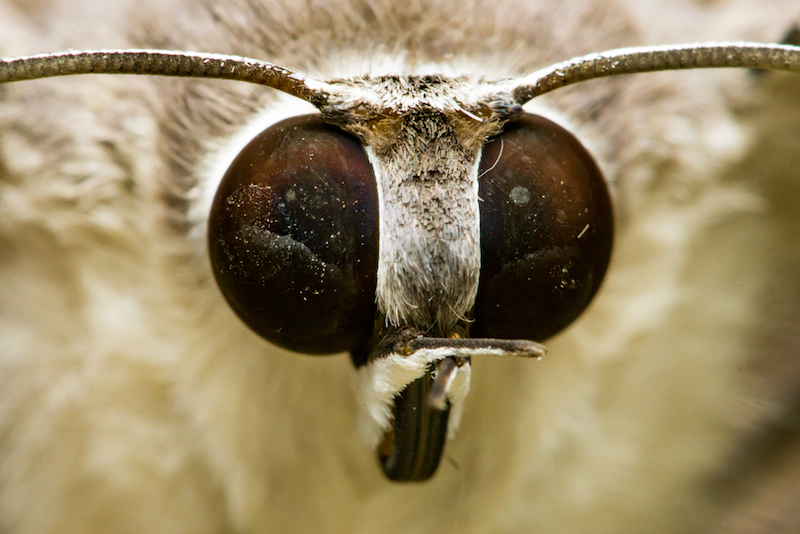No More Glare: 'Moth Eye' Smartphone Coating Doesn't Reflect Sunlight

Unusual structures on moth eyes that help the insects see at night have inspired a new anti-reflection film for electronic devices. The new technology could help users see their screens even in bright daylight.
The film significantly reduces glare as well as the need to duck into the shade to read what's on the screen.
"For most commercial smartphones, the moth-eye film can improve the readability of the screen by 10 times under a clear sky. Under direct sunlight, the readability can be improved by five times," said physicist Shin-Tson Wu, a professor in the College of Optics and Photonics at the University of Central Florida (UCF). [7 Things You Don't Know About Moths, But Should]
The nature-inspired film is expected to be inexpensive to manufacture, he said, and has the added benefits of being scratch-resistant and self-cleaning. Users could finally rid their phones of the dust, fingerprints and grime that tend to collect on regular touch screens, the researchers report.
The researchers described their technology in a study published online June 22 in the journal Optica.
Wu's team, including Guanjan Tan, the study's lead author, and Jiun-Haw Lee's team from National Taiwan University (NTU), were inspired to develop the anti-reflective film after hearing about the so-called moth-eye effect. This term refers to the unique pattern of anti-reflective nanostructures on the outer surface of a moth's corneas.
The nanostructures allow light to pass into the eyes, but don't allow it to reflect out. This helps moths see in the dark but also prevents their eyes from reflecting light that might give the insects away to predators.
Sign up for the Live Science daily newsletter now
Get the world’s most fascinating discoveries delivered straight to your inbox.
Other scientists inspired by this adaption in moths made solar cells with nanostructured surfaces to reduce the amount of sunlight that reflected away from the panels. This helps boost efficiency. Wu and Tan thought the technique could serve as a low-cost solution to improve the readability of electronic displays.
Many smartphones and laptops have been designed to solve the problem of glare using a sensor that detects the quality of light and can enhance the brightness or even dim the screen according to the environment. But increasing the display brightness typically drains a device's battery.
With this new coating, no additional power is required.
"The moth-eye-like nanostructure film can be fabricated and sold as anaccessory for our devices, just like screen-protection films," Wu said. Or, "it can also be integrated into the whole device-manufacturing process."
To make the film, the researchers first created a mold using tiny "nanospheres" that they applied to a glass surface and that self-assembled into a tightly packed layer. The researchers then used the mold like a template to press the pattern into the film. [Biomimicry: 7 Clever Technologies Inspired by Nature]
Scaling up the assembly to industrial levels would be simple to do, Wu said. They would apply the mold to a wheel and use it for roll-to-roll manufacturing, he said. Like an old-school printing press.
The next step for the researchers, they said, is to improve the film's durability, finding the right balance between flexibility and hardness.
Wu said his team of researchers is very excited about the results they achieved. The technology can be applied to smartphones, tablets and TVs that are already on the market, Wu said. But it doesn't have to stop there. Because the coating is so thin and flexible, it could be used in the future on flexible or even foldable displays.
"That even makes us more excited," he said.
Original article on Live Science.












